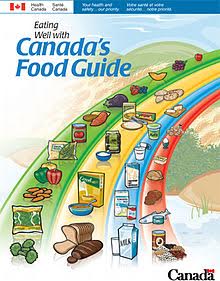
Canada’s food guide should be more influential with consumers in mind
Charlebois added that Canadian Food Guide needs to be much more convincing and persuasive and pointed out that past guides had not passed their efficiency criteria and major changes in it are required. This is evident from the alarming statistics revealing that more than 60 percent of Canadians are overweight, and four out of five are at risk of developing heart disease.
Health Canada’s efforts in bringing out a new guide by excluding the consultations and promoters of industry authorities for the next edition is a welcome news.
But the experts feel that industry’s non-involvement would be impractical considering the small size of food community having long-lasting relationships with key industry leaders.
Industry leaders had been participating in the creation of food guide from past many decades. In fact, the focus of the first food guides, back in 1942, was to attract Canadian commodities and security during the Second World War by picturing Canada as a food-sovereign country.
But with a more open food economy, things have changed. As food geopolitics have shifted, consumers have different choices and expectations.
The role of industry has changed as well and should be geared to the discussion of modern trends, challenges, research and development limits, and the realities of food distribution and competitiveness.
It should be realized, said the experts that besides making profit Industry was capable of distinguishing between economical realities and the random philosophy.
Historically, things went wrong when commodity-driven recommendations supported by weak science were incorporated in the guide. For example, encouraging Canadians to have two cups of milk a day was irrational because many immigrants were lactose intolerant and suffer from allergies and do not drink milk.
The food guide should start to include other calcium-rich products such as tofu, almond butter and green vegetables considering our wider choices compared to 1942. Statistics related to food consumption in Canada suggest that Canadians are moving on. Consumption of milk per capita has dropped steadily over the past 30 years or more.
The experts were also concerned that adopting a policy beyond dairy could raise political retaliations from industry leaders even if they are not involved in the food guide consultation process.
A recent Dalhousie University study suggests 37 percent of Canadians are actively looking for a variety of alternative sources of protein, the guide needs a reality check on meat consumption as a source of protein.
The next Canadian food guide should be based on firm scientific evidences and should relate to how it can be used by citizens.
The current version, experts said is not really geared to the consumers’ use and is rather a tool for dietitians.
The guide needs to be endorsed to apply to the daily lives of the citizens.
Consultation and involvement of citizens, parents, teachers, physical education supporters, food experts and food banks is essential for the success of the Food Guide.
Experts also said that two guides would be required: one for professionals, and the other for regular consumers.
Although both guides will have similar products, but the messages would be communicated differently.
There should be clear indication on the consumer version that food costs money.
Active participation of food economists becomes essential to make the new guide more financially realistic specially for those without resources.
Taking into consideration just what Canadians should eat is not sufficient because food is about sharing, connecting and celebrating, said experts.
For the success of the new guide celebrating Canadian food cultures and the situation in which food is consumed should be referred to in our next food guide.
The new guide will throw light how far the industry had been involved in its making.
(Reporting by Asha Bajaj, Image of Canada’s Food Guide: Wikipedia)
Support Our Journalism
We cannot do without you.. your contribution supports unbiased journalism
IBNS is not driven by any ism- not wokeism, not racism, not skewed secularism, not hyper right-wing or left liberal ideals, nor by any hardline religious beliefs or hyper nationalism. We want to serve you good old objective news, as they are. We do not judge or preach. We let people decide for themselves. We only try to present factual and well-sourced news.







